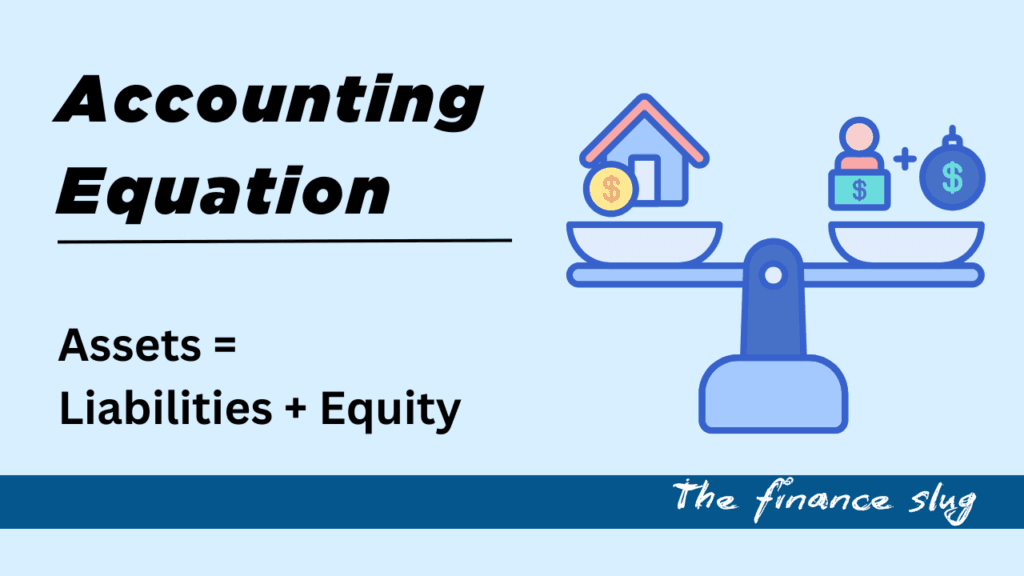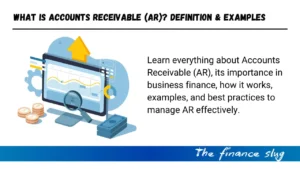
The accounting equation, also known as the basic accounting equation, is one of the most critical concepts in financial accounting. It lays the groundwork for understanding how a business tracks its financial health. This equation ensures that every financial transaction a company undertakes maintains a clear and logical balance, enabling businesses to prepare accurate financial statements.
Let’s break this concept down and explore how it applies to real-world business scenarios.
What is the Accounting Equation?
The accounting equation is expressed as:
Assets = Liabilities + Equity
This simple formula explains how a company’s resources (assets) are financed either by debt (liabilities) or by contributions from its owners (equity). It reflects the idea that a company must pay for its operations and acquisitions by borrowing money, using its profits, or relying on investments.
For example, if a business owns $50,000 in assets and owes $20,000 in liabilities, the remaining $30,000 represents the owner’s equity in the business.
Breaking Down the Accounting Equation
To better understand the accounting equation, let’s explore its three components in detail:
1. Assets: What the Business Owns
Assets are the resources owned by a company that have economic value and can be converted into cash. These resources are used to generate revenue and sustain operations.
Assets are typically divided into two categories:
- Current Assets: These are short-term assets that can be converted into cash within one year. Examples include cash, accounts receivable, and inventory. For instance, a retailer’s inventory (products available for sale) is a current asset that directly contributes to revenue generation.
- Non-current Assets: These are long-term resources that provide value over time, such as property, equipment, and intangible assets like patents or trademarks. For example, a manufacturing plant owned by the company is a non-current asset essential for production.
2. Liabilities: What the Business Owes
Liabilities are obligations or debts that a company owes to others, such as banks, suppliers, or employees. They represent claims against the company’s assets and must be settled over time through the transfer of money or services.
Liabilities are also divided into two types:
- Current Liabilities: These are short-term obligations due within one year, such as accounts payable, taxes payable, or short-term loans. For instance, a company that purchases raw materials on credit owes its supplier, creating an account payable.
- Non-current Liabilities: These are long-term debts like bonds payable or mortgages. For example, a business may take out a 10-year loan to expand operations, which is classified as a non-current liability.
3. Equity: The Owners’ Share
Equity represents the residual interest in the company’s assets after deducting liabilities. It reflects the owners’ stake in the business and includes:
- Contributed Capital: The money invested by the owners or shareholders to start or expand the business.
- Retained Earnings: Profits that are reinvested into the company rather than distributed as dividends.
If a company generates profits, equity increases. Conversely, if the business incurs losses or distributes dividends, equity decreases. For instance, if a company’s total assets are $100,000, and liabilities are $60,000, the remaining $40,000 is the equity held by the owners.
Why is the Accounting Equation Important?
The accounting equation is not just a theoretical formula; it has practical applications that make it indispensable for financial management. Here’s why it matters:
1. Maintains Balance in Financial Records
The equation ensures that every financial transaction is accurately recorded. For instance, if a company purchases equipment worth $10,000 by taking a loan, its assets (equipment) and liabilities (loan payable) both increase by $10,000. This balance is essential for preparing financial statements like the balance sheet.
2. Supports Double-Entry Accounting
In the double-entry accounting system, every transaction affects at least two accounts, ensuring the equation remains balanced. For example, when a company earns $5,000 in revenue, its assets (cash or accounts receivable) increase, and its equity (retained earnings) also increases by the same amount.
3. Provides a Clear Financial Snapshot
The accounting equation offers a straightforward view of a company’s financial position, helping stakeholders understand how assets are financed and how much equity is available. This insight is crucial for decision-making, whether it’s for securing loans, attracting investors, or planning future growth.
Real-World Examples of the Accounting Equation
To illustrate how the accounting equation works in practice, let’s consider a few scenarios:
Example 1: Purchasing a Vehicle
A company buys a delivery van for $20,000. It pays $5,000 in cash and finances the remaining $15,000 with a loan.
- Assets: Increase by $20,000 (delivery van).
- Liabilities: Increase by $15,000 (loan payable).
- Equity: Decreases by $5,000 (cash payment).
Example 2: Generating Revenue
A business earns $3,000 by providing consulting services. The client pays in cash.
- Assets: Increase by $3,000 (cash).
- Equity: Increases by $3,000 (retained earnings).
Example 3: Paying Off Debt
The company repays a $2,000 loan.
- Assets: Decrease by $2,000 (cash).
- Liabilities: Decrease by $2,000 (loan payable).
The Expanded Accounting Equation
To provide more detailed insights, the accounting equation can be expanded as follows:
Assets = Liabilities + (Contributed Capital + Retained Earnings – Dividends)
This version incorporates dividends, showing how profits are either reinvested into the business or distributed to shareholders. It offers a deeper understanding of how equity is affected by business activities.
Limitations of the Accounting Equation
Although the accounting equation is a powerful tool, it has certain limitations:
- Doesn’t Highlight Operational Performance: While it shows the financial position, it doesn’t provide insights into profitability or efficiency. For this, other financial statements like the income statement are required.
- Cannot Detect Certain Errors: The equation won’t catch errors that offset each other, such as recording an expense in the wrong account.
- Lack of Market Value Representation: Assets and liabilities are often recorded at historical cost, which may not reflect their current market value.
Despite these limitations, the accounting equation remains a crucial element of financial accounting.
Conclusion
The accounting equation is the backbone of financial accounting, providing a framework for understanding and managing a company’s financial health. By ensuring that assets, liabilities, and equity are always balanced, the equation helps businesses maintain accurate records, prepare reliable financial statements, and make informed decisions. Whether you’re a business owner, accountant, or investor, mastering this concept is essential for navigating the financial landscape.
- Accredited Asset Management Specialist (AAMS): Everything You Need to KnowBoost your finance career with the Accredited Asset Management Specialist (AAMS) certification. Learn its benefits, cost & career scope today!
- Accounts Receivable Financing: What It Is & How It WorksLearn how Accounts Receivable Financing boosts cash flow without debt. Discover benefits, risks, and how it works for businesses.
- Accounts Receivable Aging: Definition, Importance & Best PracticesDiscover Accounts Receivable Aging, its importance, calculation, and best practices to manage overdue invoices and boost cash flow.
- What is Accounts Receivable (AR)? Definition, Examples & Best PracticesLearn everything about Accounts Receivable (AR), its importance, how it works, and best practices to manage AR effectively for better cash flow.
- Accounts Payable Turnover Ratio: Formula, Importance & CalculationLearn everything about the Accounts Payable Turnover Ratio, its formula, importance, and how it impacts cash flow and supplier payments.






